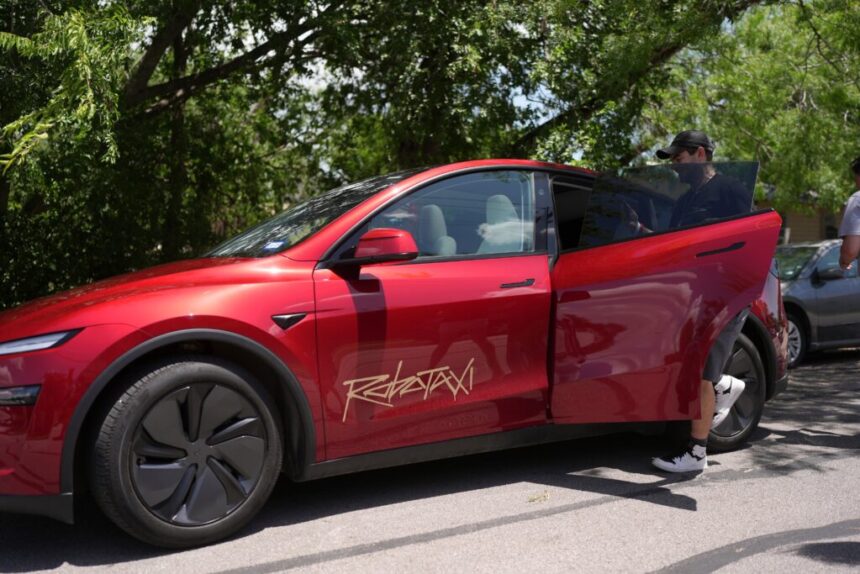Concerns Arise as Tesla’s Robotaxis Hit the Streets
The U.S. National Highway Traffic Safety Administration (NHTSA) has reached out to Tesla following the emergence of social media clips that appear to show the company’s newly unveiled driverless vehicles violating traffic regulations. This development has raised questions about the safety and effectiveness of Tesla’s highly anticipated robotaxis, which CEO Elon Musk has indicated are crucial for the company’s growth trajectory.
Initial Trials in Austin
On Sunday, Tesla’s robotaxis were put to the test on public roads for the first time in Austin, Texas. However, the unveiling was somewhat subdued, with only a select group of analysts, influencers, and shareholders participating in paid rides. In a post on X, Musk praised his teams responsible for artificial intelligence and chip design, characterizing the event as the “culmination of a decade of hard work.”
Despite Musk’s enthusiasm, videos shared online depicted several instances where the robotaxis exhibited erratic driving behaviors. One clip portrayed a vehicle making a sudden stop near a stationary police car, while others showed the cars speeding and drifting into oncoming lanes. These observations have sparked alarm regarding the overall safety and reliability of Tesla’s automated systems.
Limited Launch and Operating Parameters
This initial rollout of Tesla’s robotaxis is restricted to just 12 vehicles, and the company has implemented specific operational parameters. Notably, these vehicles are not authorized to operate under adverse weather conditions, navigate complex intersections, or transport passengers under the age of 18. Analysts argue that the small scale of this launch underscores Tesla’s challenges in catching up with its rivals in the autonomous vehicle sector.
Comparative Landscape
Competitors such as Waymo, a subsidiary of Alphabet (Google’s parent company), and Amazon’s Zoox are already providing autonomous taxi rides in not only Austin but also San Francisco, California, and Phoenix, Arizona. Moreover, fully autonomous vehicles have successfully traveled millions of miles on public roads in various other countries, including China, the UAE, and Singapore. However, whether these driverless technologies offer greater safety than their human-operated counterparts remains an ongoing investigation.
Technological Strategies and Safety Concerns
It’s important to note that Tesla’s approach to self-driving technology diverges from that of its current competitors. The company relies solely on in-car cameras, as opposed to the radar and sensor systems favored by leading firms in the market. Tesla asserts that its methodology will be more cost-effective in the long run, making it a more appealing option for consumers. Nonetheless, this has prompted ongoing safety inquiries.
The NHTSA has clarified that it does not pre-approve emerging technologies or vehicle systems. Instead, manufacturers must certify that their vehicles comply with the NHTSA’s stringent safety standards. In cases where incidents occur that may indicate safety defects, the agency is responsible for conducting investigations.
| Feature | Tesla Robotaxis | Competitors |
|---|---|---|
| Total Vehicles in Trial | 12 | Varied, larger fleets |
| Weather Restrictions | Yes | No |
| Passenger Age Limit | 18+ | No Limit |
| Key Technology | In-car cameras | Radar and sensors |
The road ahead for Tesla’s robotaxi initiative appears fraught with challenges, and how the company addresses these safety concerns may play a pivotal role in its success in the burgeoning autonomous vehicle industry.




